This tiny Washington town floods over and over. Its residents refuse to give up

On the Skagit River, the tiny town of Hamilton is a refuge, a quiet pocket of affordability where most neighbors know each other.
One reason it's affordable is that it floods.
Earlier this month, Hamilton faced its latest catastrophic flood. That got people wondering, yet again, about the town's future.
H
amilton is a small, tight-knit town of about 90 houses on the banks of the Skagit River about 30 minutes east of Mount Vernon. Before white settlers founded the town, there was a tribal fishing camp there, and a permanent village on higher ground nearby.
Now, it’s an affordable place to live, with homes costing around $150,000. People commute great distances to work, like the mayor, who works as a flagger for highway construction projects around Seattle. Others work at Janicki, a local manufacturer of airplane parts. Some people don't work, or can't work.
A shrinking town
Beth Easterday is the town clerk of Hamilton. She's walking around town, surveying the damage left by the flood.
Sponsored
“This is my lovely home,” she says, pointing to a house with an overturned freezer in the yard. It floated there in from someone else's house.
Easterday's house survived the flood relatively unscathed. After a past flood, the owner used money from FEMA to raise it above the flood plain.
Easterday says not everyone spent their FEMA money so wisely. “They used the money for other things,” she says. “One lady got new boobs. And another person got a really nice new car and a new Harley.”
We couldn’t corroborate those stories. But Easterday’s home was raised, so she was able to wait safely until her son Jake and son-in-law A.J. Van Dyke came in a boat and got her.
When the flood receded, she and Van Dyke returned to help haul garbage out of flooded buildings.
Sponsored

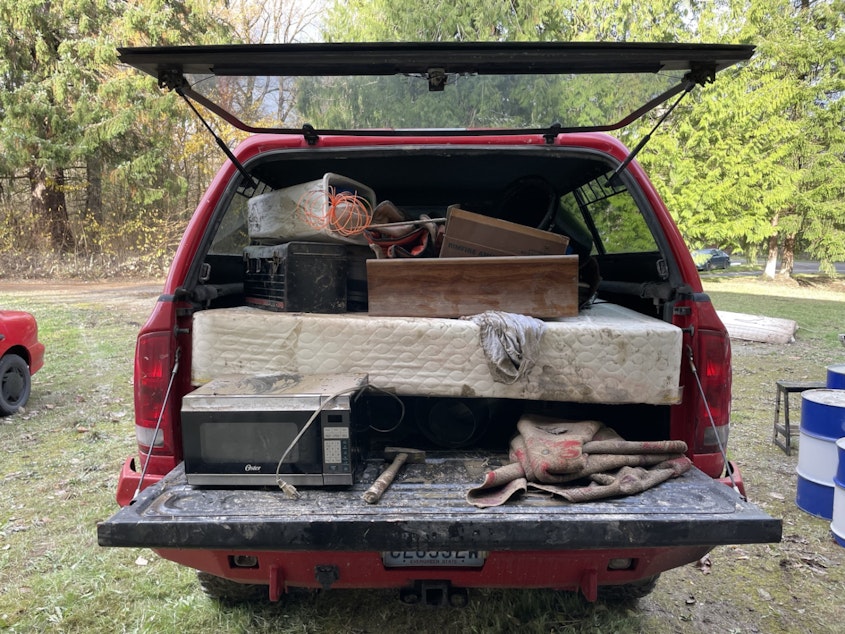
After filling Van Dyke's pickup with garbage, she stops to check on another resident.
"Hey Bert?" she calls from the road.
"Yeah?" comes a voice from behind a trailer. Bert Kerns was inspecting debris around his home.
Sponsored
Kerns is a Vietnam veteran, Marine Corps. He lives in a trailer on land he rents. He managed to move his trailer before the flood, which means that he, too, still has a place to live.
But he lost lots of stuff. Like a freezer full of meat, which he's trying to salvage, and a big stack of firewood that he lost to looters as the floodwaters receded.
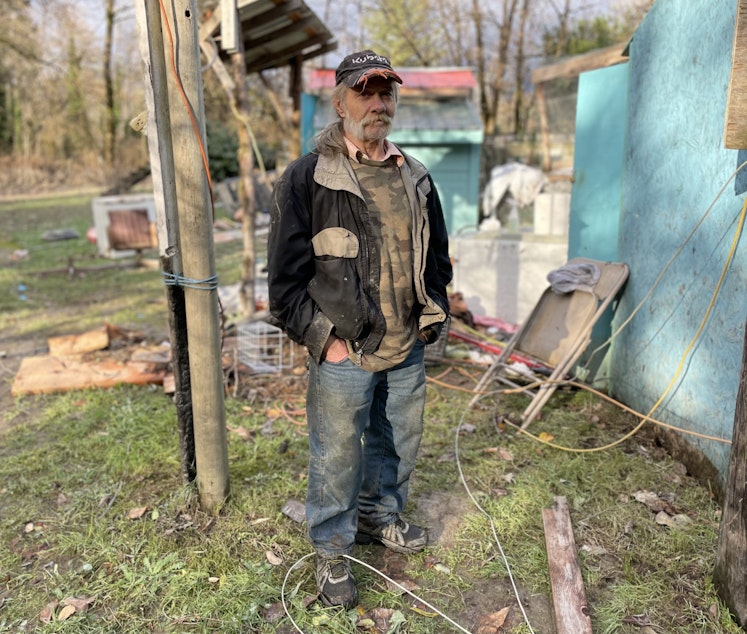
Kerns has been through floods before. “I’ve been here since '80, in this area. And this is the highest it’s been. This was scary.”
It’s scary, but it’s not new.
Sponsored
All over town, there are empty lots. They tell the story of previous floods.
“These homes, I believe, were taken out in the ’98 flood?” Easterday says, pointing to a pair of empty lots.
Behind Kerns' trailer is a foundation without a home on it. The home burned down years ago.
This town is slowly shrinking. With rare exceptions, it’s illegal to build new homes here. And homes can’t be rebuilt if they’re more than 50% damaged, whether by flood or fire or any other reason.
Sponsored
After each flood, a county inspector comes around and declares, "This home’s okay to rebuild," and, That one’s too far gone."
Higher ground
But people love this town, and don’t want it to fade away. Many years ago, elected officials in Hamilton reached out for help.
Rebecca Bouchey is with a land trust called Forterra. They help communities buy land in situations like this.
“Hamilton’s been facing flooding almost since it was founded," Bouchey says. She said they were invited by the town to work on a long-term sustainable solution.
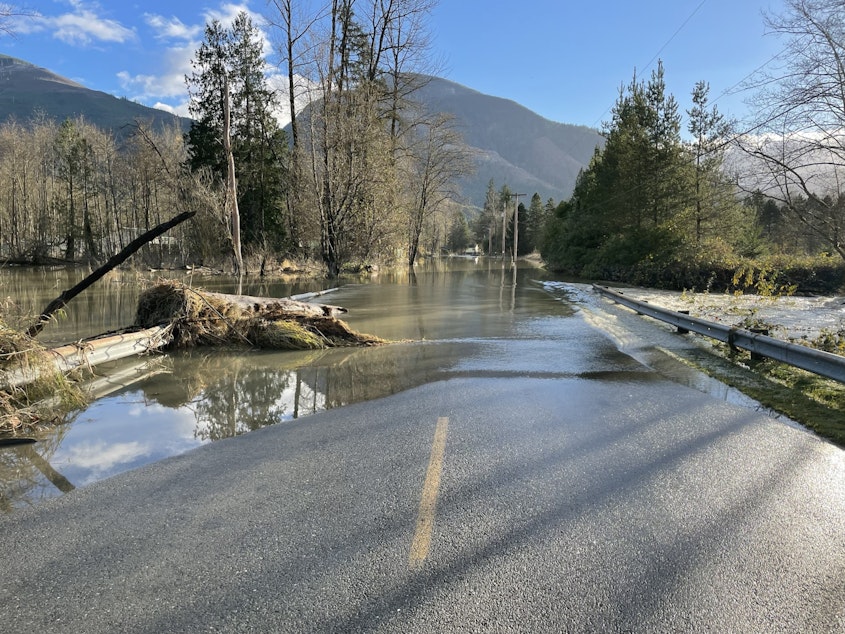
Forterra bought 40 acres uphill from Hamilton. The town annexed it and zoned it for development.
They worked with the community to develop basic plans. There will be a big park, hundreds of new homes, with enough affordable units so that everyone in Hamilton could move there, if they wanted to.
But an over-simplified story spread that people would be forced to move. It became an issue in the 2019 mayor’s election.
The incumbent mayor Joan Cromley had championed the project.
Carla Vandiver ran against the project and won by 12 votes. “I was against it, as far as thinking the town was going to have to be moved. But then, I found out that that’s not the case.”
So Vandiver is no longer against the project.

The former mayor took a job with Skagit County Emergency Management department. She had a front row seat to flood emergencies and had taken classes on the topic while mayor of Hamilton.
The town remains divided.
"It's a touchy situation," says Heidi Hoyle, of the Hamilton Fire Department. "You even mention anything about relocating anybody, and they'll just walk away from you, or they'll just 'leave me alone,' type of speak."
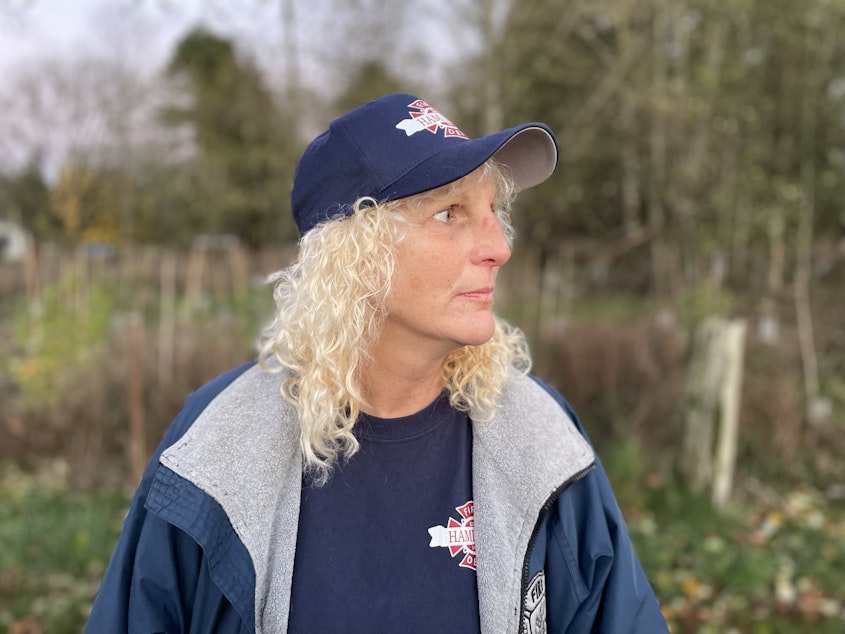
Rather than moving, many residents emphasize a different approach: Be prepared for flooding.
Adapting to disaster
Theresa and Frank Boots own Boots Bar and Grill.
“So as soon as I heard ‘flooding,’ I prepared — got everything out of here. I didn’t lose one thing," Theresa Boots says. "We put plastic sandbags all around the bar, which saved us."
Over 25 members of the community showed up to help. They lifted the pool tables up, and slid bar tables underneath.
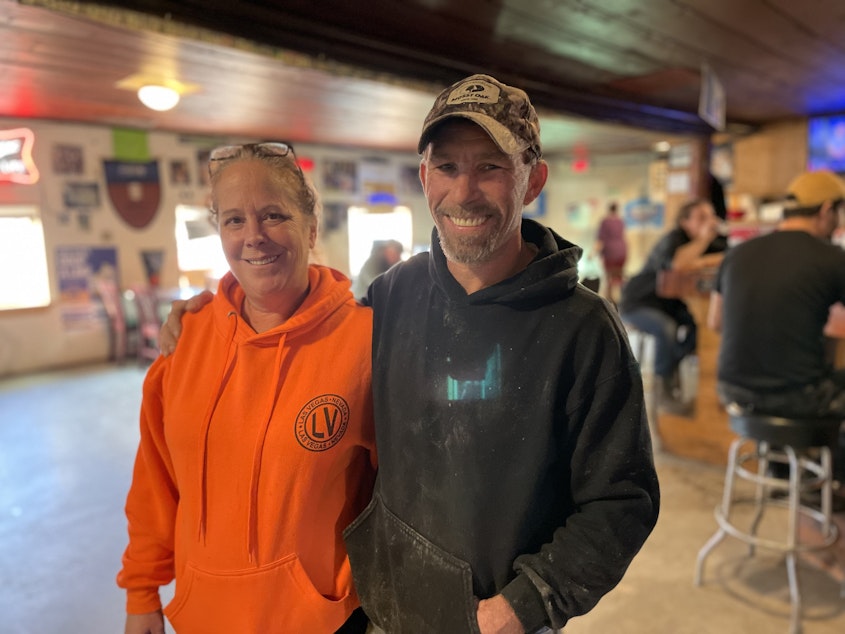
"I still got like a foot and half, two feet in here," Theresa Boots says of the water. "But me and my bartenders and my husband have been kickin’ butt the last two days. Just moppin’, bleachin’ — lots of bleach.”
“Yep. Just clean her up and move on,” Frank Boots says. "People in Louisiana, their towns are below flood level. Their houses are on stilts. So why move an entire town — or towns, plural — for this?"
Repeated catastrophes like November's flooding have forged a strong sense of community in Hamilton. As I walk around town, poking into backyards and leaning over fences, I meet people who used to live in Hamilton, and have returned to help with cleanup.
John Milholland drove up from Burlington to help a couple friends in Hamilton. He carries loads of wet flooring – and throws it on a big bonfire in the backyard. It makes a lot of smoke.
“It’s a good community here, and a lot of people help out. And we just keep doing it every year,” he says.
Every year?
“Well, it’s almost every year it floods here," he says. "It hasn’t been as bad in the past recent years, but this year was surprisingly worse than normal.”
Standing against the river
Every time it floods in Hamilton, it’s a little different. Sometimes the floodwaters will come from one tributary, sometimes from another. Some floods cover more of town than others. For this reason, people in different parts of town will give different answers when asked how often Hamilton floods.
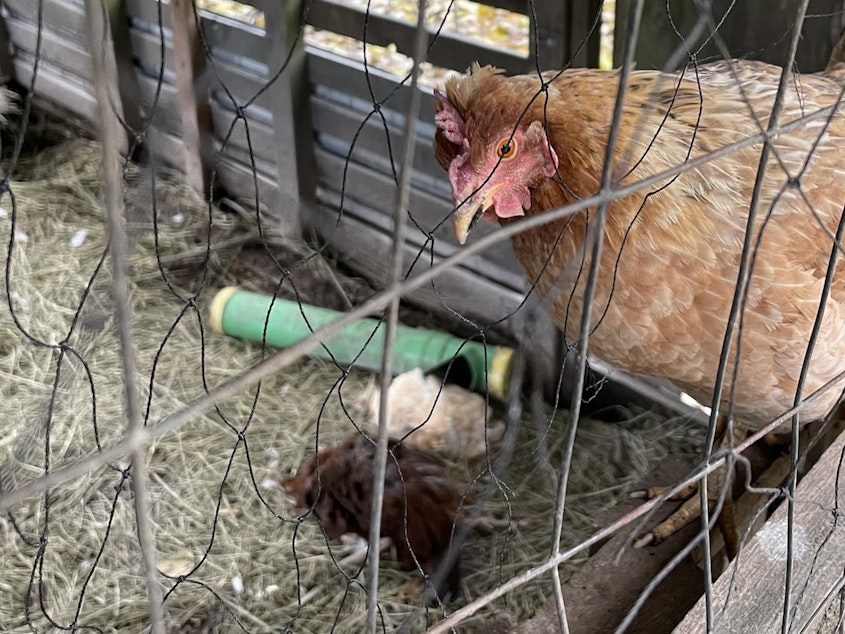
But many in town say that if the government would reform how the dams are managed, dredge the river and raise up all the houses, Hamilton would be fine.
It’s a thorny issue – with many stakeholders, including members of the Upper Skagit Indian Tribe.
“One thing you have to be cognizant historically – is that the river naturally meandered, constantly throughout the valley. And this happened over time,” says Scott Schuyler, an official with the tribe.
Schuyler says – all these towns that suffer flooding from the Skagit – were once the sites of Indian villages. But the permanent villages were mostly located above the flood zone. One of their seasonal fishing camps was near downtown Hamilton.
“That’s how our ancestors dealt with flooding. We didn’t build permanent stuff on the river, for this very reason – you just have to rebuild again and again and again,” says Schuyler.

Schuyler says he understands why residents of Hamilton might not want to leave their homes near the river. He says he has many friends and neighbors in river communities, and tribal members live there too. "We have empathy for people who live there. So in a sense, we stand with them against the river."
But he says the frequency and severity of floods has gotten worse.
He says climate change plays a role. So does the loss of old growth forest.
For these reasons, he supports Forterra's project. He doesn't know yet whether he'd choose to move there himself. He recently planted 40 cedar trees on his property, and he'd like to see them grow tall. But he says the time may come when he faces a difficult choice. During this flood, the waters came closer to his home in Sedro Woolley than they have before.

At Forterra, Rebecca Bouchey is trying to rebuild trust in the project to expand Hamilton onto higher ground. She's also trying to raise money to advance the project. Once it's shovel ready, she says it'll be easier to bring in additional grant money.
But if community opposition grows, that could create obstacles.
“It’s complicated, and people are fearful, they don’t want to lose what they have, which is their community," she says.
"The sad reality that you see, is that, while the disaster brings out the best in people, it also contributes to their displacement, and that’s what we want to avoid in the future – is anyone being forced to leave without another option.”
Once, Hamilton was considered as important as Mount Vernon, and was in the running to be the county seat. Now it’s just struggling to survive.
Whether it finds a new identity as a refuge from floodwaters depends partly on its people and their elected leaders.
But mostly, it depends on the river.




